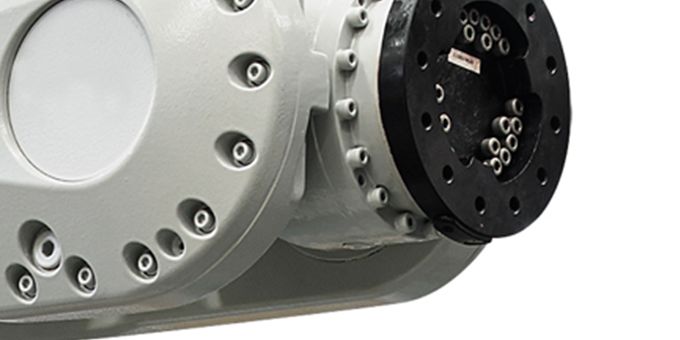In 2020, McStarlite invested in automation by integrating a KUKA robot coupled with Robotmaster offline robot programming (OLP) software, to perform the lipskin polishing application.
 Offline Robot Programming for Polishing Aircraft Engine Lipskins
Offline Robot Programming for Polishing Aircraft Engine Lipskins

Case Study from | Robotmaster
The Customer / Challenge:

The world’s leading producer of aircraft engine nacelle lipskins since 1973, McStarlite, produces some of the largest, most complex sheet metal components for the aerospace industry. For decades, the polishing process was done manually, relying on hours of skilled operator time to complete the task. However, hand polishing is time consuming and takes a physical toll on workers. Another downside to hand polishing is part inconsistency, as the surface finish is only as good as the skill of the individual laborer, and components have to be reworked to meet the stringent requirements within the aerospace industry. This additional rework and cycle time cuts into the profitability for this operation.
The Solution:
In 2020, McStarlite invested in automation by integrating a KUKA robot coupled with Robotmaster offline robot programming (OLP) software, to perform the lipskin polishing application. Lipskins, also known as engine nacelle leading edges, are the aerodynamic structures that make up the leading edge of an airplane engine.
Consistency, accuracy, and high-quality finishes were key requirements when McStarlite was assessing automation vendors. Robotmaster’s ease of use and flexibility enabled the McStarlite team to manipulate process-specific parameters and achieve the optimal feed-rates, RPM, forces, and the required roughing and finishing passes.
With automation, they are now able to deliver consistent and accurate parts at a fraction of the time, ultimately allowing them to meet demand and the stringent requirements from the aerospace industry.
“Automation is something we had been wanting to do for over a decade, it’s a lot of planning and CAPEX, however, automation standardizes the finish, the consistency, and improves our cycle time.” - Saravanan Rajaram, Mechanical Engineering – Quality Assurance, McStarlite
Aside from the improvements in production, enhancing working conditions of their operators and laborers was a priority when looking at the next investment for the organization. The type of manual labor being performed prior to automation was very hard on their laborer’s back, legs, and arms. It is a priority at McStarlite to provide a better working environment to its people, which is why a user-friendly tool like Robotmaster was the ideal choice.
“We are very proud that we kept the same people that were doing the manual labor and trained them to be operators. Robotmaster’s simplicity of use enabled us to repurpose the people that were doing the manual labor, to now use the robot. Even operators with basic education can use/program the robot eliminating the need to hire specialized trained operators.” - Dimitar Nasev – Vice President, McStarlite
Programming and Path Optimization
There are two main ways to program an industrial robot. One is via teach pendent, where each point is programmed individually, manually, using the robot which is very time consuming and inefficient.

The second is via offline programming (OLP) software, where the programming is performed on a computer allowing the robot to continue production without downtime. To learn more about OLP read this article Why use Offline Robot Programing Software and how to get started.

The opportunity to reduce cycle times and increase production is a key feature of OLP. The unique value that Robotmaster delivers for McStarlite is not just the simple-to-use interface that allows their operators with no previous experience programming robots to be able to do so, but the path optimization capabilities changed the game for them.
“The optimization capabilities are absolutely brilliant. I have done a little bit of programming myself, troubleshooting errors and correcting them is a complicated and time-consuming process. Robotmaster made the process very simple further reducing the time it takes to program the part.” - Saravanan Rajaram, Mechanical Engineering – Quality Assurance, McStarlite
Robotmaster provides a rapid visualization of issues and opportunities to easily obtain optimal robot programs. Instead of the frustrating hit-and-miss approach, operators can quickly and easily ensure their programs are error free. High-mix, low-volume production facilities especially benefit from this technology as rapid, validated, and offline programming greatly improves their cost efficiency.
The Results:
By taking the leap into automation, McStarlite can deliver consistent high-quality parts to Airbus, reduce cycle times, and meet the demand for the polished lipskins.
What is next for McStarlite? Now being able to maximize profits and quote lower prices on future programs, McStarlite can be much more competitive and take on new opportunities and projects. They have plans to add additional robot cell components such as a rotary table to enable them to polish larger parts such as full engine cowlings. We look forward to being a part of their journey as they continue to expand their capabilities.
Automation and offline robot programming opened the doors of opportunity for McStarlite. Learn how Robotmaster can help you increase your robot’s productivity and profitability, schedule a demo.
The content & opinions in this article are the author’s and do not necessarily represent the views of RoboticsTomorrow

Robotmaster
Robotmaster, a Hypertherm Associates brand, is an offline, is an offline robot programming software that helps manufacturers maximize their robot's productivity with easy and efficient robot programming for a variety of applications such as cutting, trimming, milling, welding, spraying, polishing, sanding, grinding, deburring, and more. Robotmaster uses integrated CAD/CAM functionality to make robotic programming easy and intuitive for everyone, even first-time users.
Other Articles
Robotic programming brings increased productivity and faster return on investment
Calculating the ROI of Offline Robot Programming Software
10 things to consider when exploring Offline Robot Programming software solutions
More about Robotmaster
Featured Product

